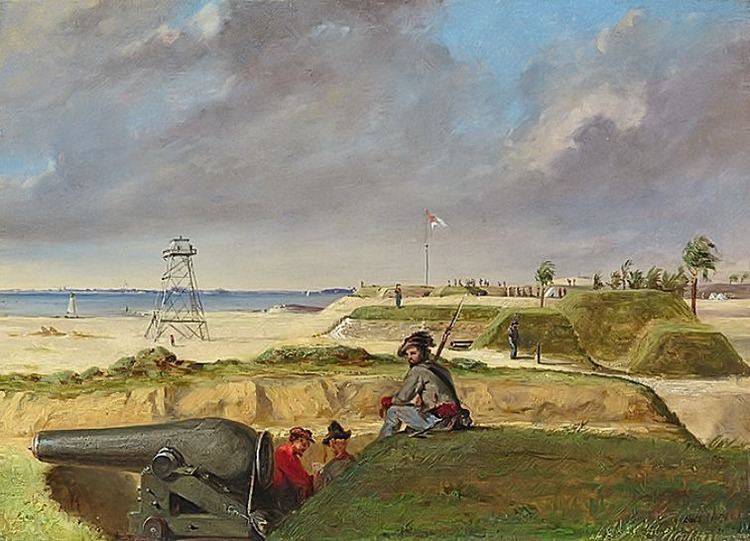Nationality American Name Conrad Chapman | Role Artist | |
 | ||
Born February 14, 1842 ( 1842-02-14 ) Washington, DC, USA Died December 10, 1910, Hampton, Virginia, United States | ||
Conrad Wise Chapman (1842–1910): 42 paintings
Conrad Wise Chapman (1842–1910) was a soldier and an artist, mainly known for his paintings of Confederate battlements surrounding Charleston Harbor.
Contents
- Conrad Wise Chapman 18421910 42 paintings
- Mozart Violin Sonata No 32 and Conrad Wise Chapman
- Early life
- Career
- References

Mozart (Violin Sonata No. 32) and Conrad Wise Chapman
Early life

Chapman was born in Washington, D.C. and grew up in Europe where his father, John Gadsby Chapman, was working as an artist.
Career

In 1861, he returned to America and enlisted in Company D, Third Kentucky Infantry, Confederate. He was wounded in Shiloh along with seeing action in Mississippi and Louisiana, before a transfer to the 46th Virginia Infantry at the request of his father to Henry Alexander Wise. Over the next 10 months, he also served with the 59th Virginia Infantry, known as the Wise Legion or Wise Brigade, with both the 46th and 59th at Chaffin's Farm on the James River in Henrico County.
![Image result for poor rich man, and the rich poor man. (1836) by: catharine maria sedgwick.( include: live and let live. (1837) by: catharine maria sedgwick [book]](https://alchetron.com/cdn/conrad-wise-chapman-4f698ad5-780c-4e02-9d26-c522e848200-resize-750.jpg)
In September 1863, the Wise Brigade was ordered south to take part in the defence of Charleston, South Carolina. Chapman was commissioned to create thirty one paintings of the city's defenses by Brig. Gen. Thomas Jordan, chief of staff to commanding Gen. P. G. T. Beauregard. This was part of a campaign by Beauregard to increase support for his ideas about the defense of the harbor in the Confederate government. Chapman served in the city from early September 1863 to March 1864. He intended to paint the entire series in Charleston, but having received word of his mother's illness, Chapman was granted furlough in April 1864 and left for Rome, Italy to visit his family. It is there that he painted 25 works—with five also done by his father—from sketches he made in Charleston.
After the end of the war, unable to reconcile to the Confederacy's loss, Conrad traveled to Mexico, where he painted a series of views of the Valley of Mexico. He also spent time in France and England. In 1898, his entire collection of paintings went on view at the Union League Club in New York, where they attracted attention, but no buyers. He then moved his family to Richmond where the following year he sold 31 paintings to then Confederate Memorial Literary Society, which later became the Museum of the Confederacy and is now the American Civil War Museum.
Conrad created art while he was in active duty during the Civil War. While there were several artists on the Union side who captured the war in painting, which were also active, this was not the case on the Confederate side. His works may be the only set of battle subjects painted by a Confederate army artist during the war.
